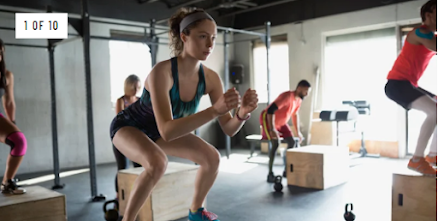If you want to work out effectively, build muscle, and become shredded, you must perform the squat. Squats train almost all of the muscles in your body and produce significant growth, so using them regularly can help you gain overall strength and size.
Due to the physical and hormonal changes they cause, squats are usually referred to as "the king of exercises". According to multiple studies, heavy barbell squats aid in the body's release of testosterone and HGH, both of which are crucial for muscle growth throughout the entire body, not just in the legs.
Unquestionably, squats are one of the best exercises out there. In your daily activities, such as getting in and out of bed and chairs, sitting in an office chair, and more, think about how much you squat. You'll fill the consequences because of your weak leg muscles.
Despite this, you'll waste your time if you do some of the most common squat mistakes. For the most of these mistakes, a lot of people surely "don't do squats"; you know, the ones who say it's bad for their knees or back.
With any difficult exercise, there is a lot of room for error, and the squat is no exception. The top 10 squatting mistakes people do are listed here, along with explanations of why they're horrible and
With any difficult exercise, there is a lot of room for error, and the squat is no exception. Here are the top ten squatting mistakes people make, along with explanations of why they're bad and suggestions for avoiding them.
Not Going Low Enough
Still too many men stoop above parallel. By restricting your range of motion and injuring your knees since the force of the barbell won't transfer to your hips until you reach parallel, this will lessen the strength and size you develop in your legs.
Contrary to popular belief, parallel squats are not detrimental for your knees. Deep squats boosted quad growth and strength more than partial squats, according to Danish researchers.
Rather, when you squat, brace your core and check that your thighs are parallel to the ground (or even lower) at the bottom. Use a simpler squat variation, such as the Goblet Squat or Zercher Squat, to keep your torso upright and allow you to squat lower if you are unable to go that low.
Collapsing Your Knees In
Never squat with your knees buckling inward. Your knees will be stressed, and the ligaments will be harmed.
Instead, keep your knees aligned with your toes at all times. Place a mini-band around your knees if they are still inclined towards one another. This will compel your legs to work against the resistance and engage the necessary muscles to maintain knee alignment.
Lifting Your Heels
Men frequently elevate their heels as they walk downward. This puts more strain on your knees, moves the weight forward, and makes things more difficult. Drive through your heels instead. To compel yourself to use your heels when squatting, curl your toes upward as a temporary cure. Additionally, because rising heels may indicate stiff ankles, include more activities to improve ankle mobility in your warm-up.
Using the Same Squat Variation
To target different muscles and prevent plateaus, alternate between the dozens of squat variations available.
For instance, for a few weeks, substitute goblet squats for back squats to develop your quadriceps, activate your core, and lessen the strain on your lower back. Change to Anderson Squats to strengthen your drive from the bottom and to increase your squat weight.
Not Using the Safety Bars
Always use the safety bars when performing squats within a power rack. Set them so that they are slightly above the point at which the barbell would be at the bottom of your squat. (If you set them too high, every rep will result with you slamming your barbell on the safety bars.) In this manner, you can lay the bar on the safety bars and evacuate from underneath if you become too exhausted.
Rounding Your Lower Back
When squatting, keep your spine neutral and flat. Your lumbar spine will be put under risky strain if your lower back is arched. This is known as a "butt-wink" in the squat community because, as you move closer to parallel, your butt tucks under and your lower back rounds.
Avoid putting more arch in your lower back to counter the butt wink. (I kept making the same error.) Instead, unrack the bar, take a deep breath, and then exhale as forcefully as you can while standing in your position. Your ribs will drop, and your pelvis point will tilt upward. Maintaining this improved pelvic and rib position as you squat will activate your entire core and reduce pressure on your back.
Not Using Your Glutes
The strongest muscle in your lower body is found in your glutes. Whenever you squat, use them.
To engage your glutes and build muscle as you drive from the bottom, visualise spreading the ground apart with your feet. Squeeze your glutes to fully extend your hips at the finish line.













No comments:
Post a Comment